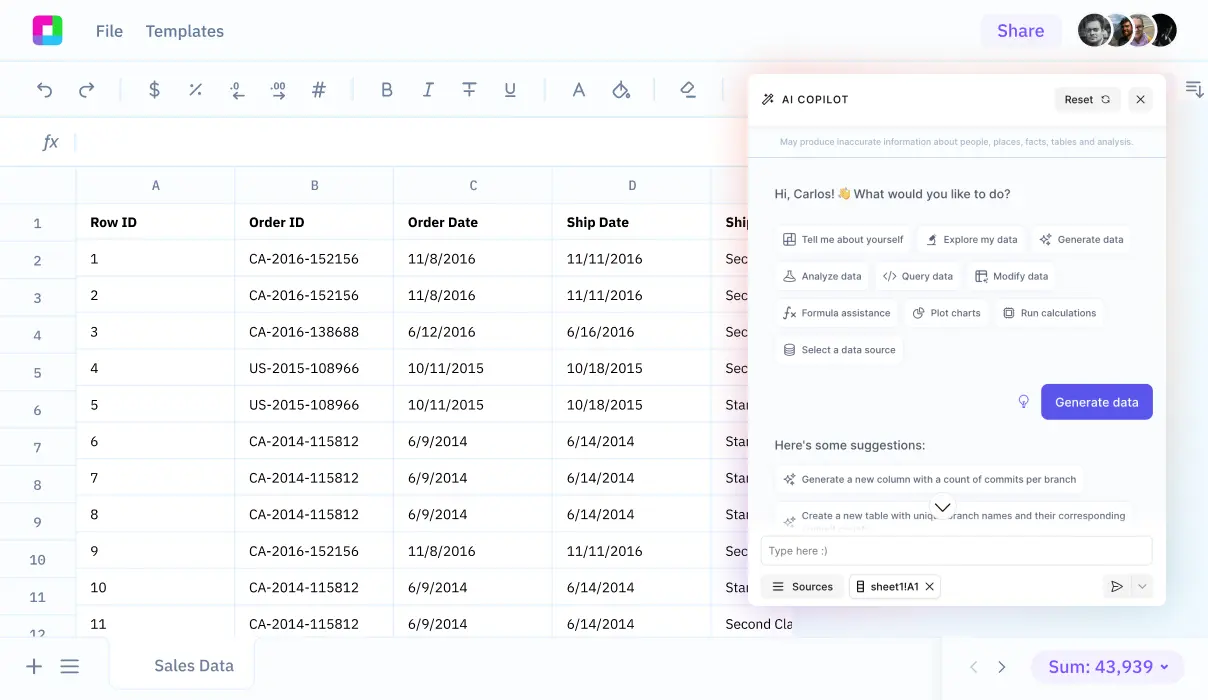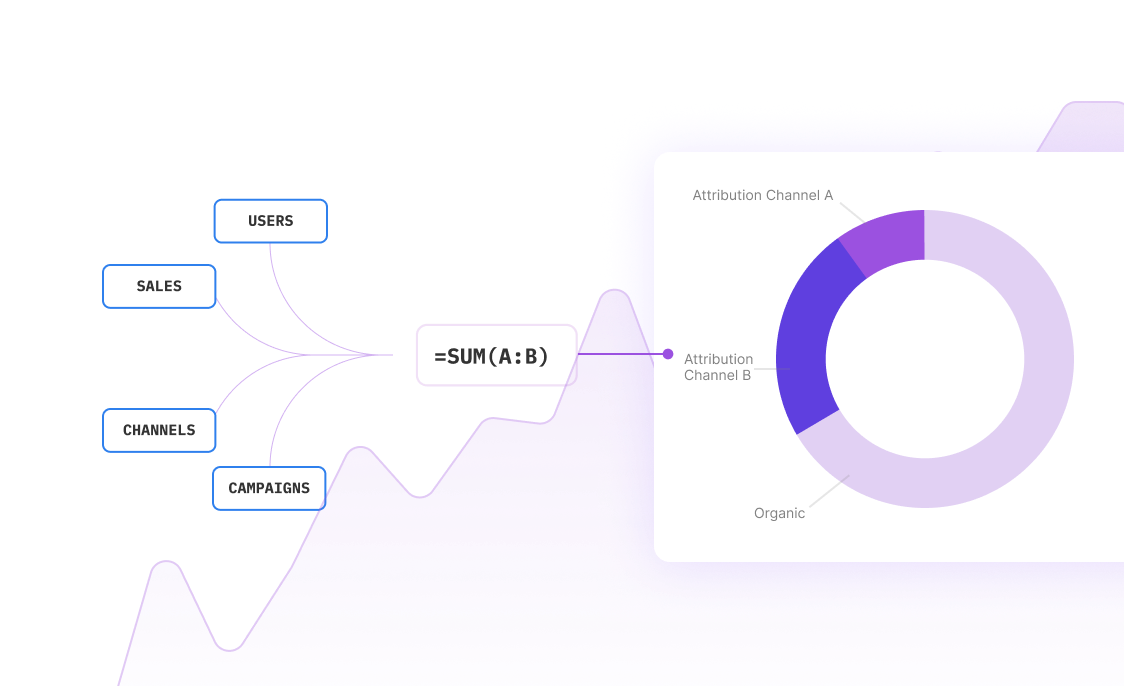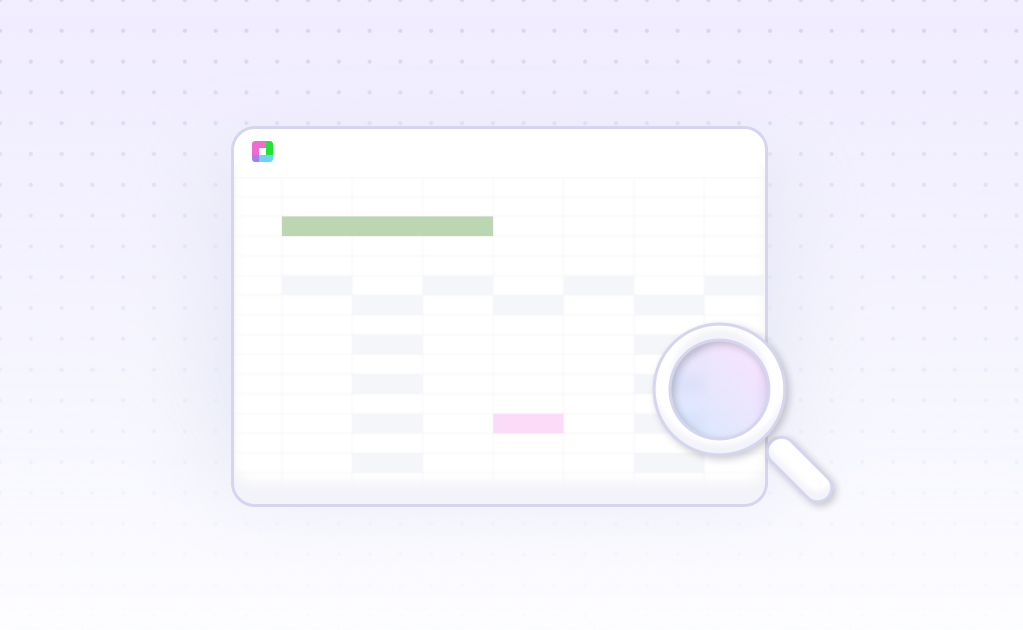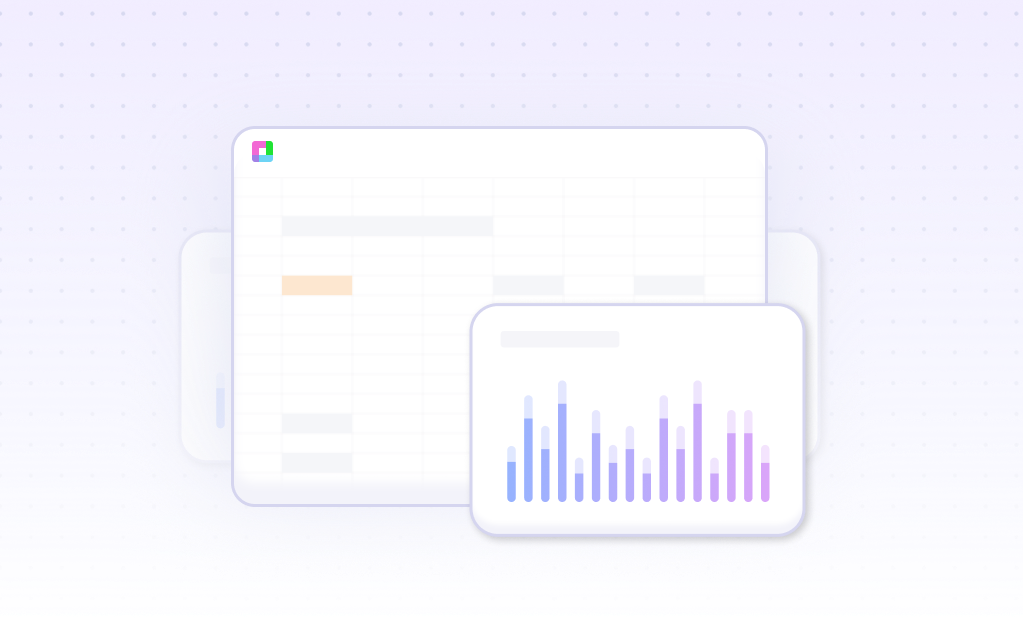
Introduction
Financial return analysis is crucial for evaluating investment performance. Excel offers traditional tools for calculating holding period returns, mean returns, and geometric means through built-in functions and formulas. While Excel requires manual calculation and formula knowledge, modern AI tools now streamline these analytical processes.
AI-powered spreadsheet tools automate complex financial calculations, enabling efficient scenario analysis, forecasting, and trend analysis. These tools remove the need for advanced Excel expertise while providing actionable insights for better decision-making.
By combining Python libraries like pandas and numpy with spreadsheet functionality, investors can now visualize stock performance through normalized returns, daily returns, and logarithmic daily returns. Learn how Sourcetable simplifies financial return analysis - try it at sourcetable.com/signup.
Financial Return Analysis with Sourcetable
Sourcetable provides essential tools for comprehensive financial return analysis, matching Excel's core functionality while enabling collaborative workflows. Like Excel, Sourcetable offers robust charting capabilities and calculator functions for detailed financial assessment.
Impact investors can leverage Sourcetable's visualization tools to create scatterplots that reveal relationships between financial and impact performance. These data-driven insights help quantify investment outcomes and test performance assumptions.
The platform's multi-user collaboration features support team-based analysis of financial and impact metrics. With built-in audit trails, teams can track changes and maintain data integrity throughout the analytical process.
Sourcetable enables empirical analysis of impact-financial relationships, helping investors make better-informed decisions that balance both financial returns and impact goals.
Benefits of Financial Return Analysis with Sourcetable: A Modern Alternative to Excel
Financial return analysis is essential for effective decision-making, performance evaluation, and future planning. Traditional tools like Excel become cumbersome with large datasets, but Sourcetable offers powerful alternatives for financial analysis.
Why Choose Sourcetable for Financial Analysis
Sourcetable's AI-powered platform automates data entry, analysis, and visualization while handling multi-gigabit files that Excel struggles with. It syncs with essential financial databases and over 100 business applications including Stripe, Quickbooks, and Google Analytics.
The platform's AI assistant streamlines workbook analysis, data cleaning, and chart creation. Unlike Excel's hours-long processing times, Sourcetable computes results almost instantly and supports advanced 3D and 4D data types for complex financial modeling.
Advanced Features for Financial Analysis
Sourcetable maintains familiar spreadsheet features like A1 notation and cell-based referencing while adding powerful SQL querying capabilities. Its AI-powered tools enhance data storytelling, identify patterns, and generate accurate forecasts for better financial decision-making.
Technical users benefit from vector queries and data transformations across different spaces, making Sourcetable ideal for compute-intensive financial calculations and large-scale data analysis.
Financial Return Analysis Examples with Sourcetable
Sourcetable provides sophisticated return on investment (ROI) and return on invested capital (ROIC) analysis capabilities. The platform calculates key metrics like ROIC using the formula ROIC = NOPAT / Average Invested Capital. For example, a company with $10 million NOPAT and $100 million average invested capital yields a 10% ROIC.
ROIC Growth Analysis
Sourcetable tracks ROIC growth trends over time. In a sample analysis, ROIC increased from 11.2% to 15.0% over five years, while NOPAT margin expanded from 17.5% to 23.3%. ROIC typically increases when invested capital declines while revenue and NOPAT grow faster than invested capital.
Investment Return Evaluation
The platform evaluates investment efficiency through capital allocation analysis. A $25 million increase in invested capital yielding a $5 million NOPAT increase represents a good investment. Conversely, a $150 million capital increase generating only $5 million in NOPAT indicates poor returns.
Annualized ROI Comparison
Sourcetable calculates annualized ROI to compare investments held for different periods. This feature enables investors to evaluate diverse investment opportunities and assess stock performance against business ventures on a standardized timeline basis.
Financial Return Analysis Use Cases with Sourcetable
Sales Forecasting and Trend Analysis |
Analyze historical sales data to predict future revenue trends and forecast sales figures. AI processes past performance metrics to generate accurate projections for strategic planning. |
Cash Flow Optimization |
Analyze cash flow patterns to improve working capital management and predict future liquidity positions. AI examines historical cash flow data to identify seasonal trends and potential shortfalls. |
Cost Reduction Analysis |
Identify potential cost savings through pattern recognition in financial data. AI analyzes expense patterns to highlight areas for optimization and efficiency improvements. |
Customer Churn Prediction |
Predict customer attrition risk by analyzing historical customer behavior data. AI examines patterns in customer interactions and purchase history to identify high-risk accounts. |
Dynamic Pricing Optimization |
Optimize pricing strategies based on market dynamics and demand patterns. AI analyzes competitor pricing, market demand, and historical sales data to recommend optimal price points. |
Frequently Asked Questions
What is financial return analysis and why is it important?
Financial return analysis is a process of evaluating investment performance over time by calculating average returns. It is important because it helps fund managers make future business decisions, review historical trends, and identify the best investment opportunities. Through financial analysis, investors can identify economic trends and build long-term plans for business activity.
How does Sourcetable help with financial return analysis?
Sourcetable is a venture capital-backed AI-powered spreadsheet platform that generates revenue and is supported by 23 investors. It helps calculate both arithmetic average returns (sum of periodic returns divided by number of periods) and geometric average returns (accounting for compounding effects) through automated calculations, pattern analysis, and error detection.
What are the key advantages of using AI for financial return analysis?
AI in spreadsheet analysis can automate calculations, analyze patterns in data, suggest formulas, correct errors, validate data, automate data entry, and identify trends. These capabilities help streamline the financial analysis process and improve accuracy in calculating average returns.
Conclusion
Excel provides powerful tools for financial return analysis, including holding period return calculations using the formula HPR=(Ending value-Beginning value)/Beginning value and geometric mean returns via the GEOMEAN function. While Excel requires manual configuration and formula knowledge, AI-powered alternatives streamline the analysis process.
Sourcetable offers comprehensive financial analysis capabilities through regression analysis, year-over-year growth tracking, and both top-down and bottom-up analytical approaches. The platform incorporates key financial metrics and ratios to evaluate liquidity, solvency, profitability, and efficiency. Experience automated financial return analysis by trying Sourcetable at sourcetable.com/signup.
Recommended Analysis Guides
Connect your most-used data sources and tools to Sourcetable for seamless analysis.
Frequently Asked Questions
If your question is not covered here, you can contact our team.
Contact Us





